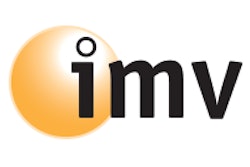Radiation therapy providers in the U.S. are again buying new equipment and upgrades after surviving the effects of the Great Recession, which caused utilization to fall 22% from 2007 through 2008, according to a new report from market research firm IMV Medical Information Division.
IMV's 2012/2013 Radiation Therapy Market Summary Report determined that radiation therapy providers have regained the stability that has characterized their industry for most of the past decade, according to Lorna Young, IMV's senior director of market research.
The report's findings are based on phone interviews from June 2012 through March 2013 with radiation therapy supervisors or department managers at 26% (613) of approximately 2,340 radiation therapy services in the U.S. Survey data were extrapolated to produce industry-wide estimates.
According to the 2012-2013 census survey, approximately 895 sites, or more than one-third of all radiation oncology services, plan to acquire new radiation therapy equipment by 2015. About 45% had budgeted funds for upgrades or to buy new oncology information systems.
Since 2009, the proportion of radiation services with no dollars for capital purchasing has declined by half, from 44% to 22% of all services, according to the report. The other 78% budgeted an average of $1.2 million in 2012 for new equipment and upgrades.
"This is really consistent with that whole progress toward digitization," Young told AuntMinnie.com. "Providers have traveled along this road for more than a decade, first with digital imaging and now by linking their systems with the electronic medical record."
Stable utilization
The report estimates that 20.9 million radiation therapy visits -- a measure equivalent to individual radiation sessions -- were completed in 2012. That figure was nearly equal to the total in 2007, before a 17% reduction in visits during the 2008-2009 recession, Young said.
"This has been a very stable business," she added.
The estimated number of courses of radiation treatment -- a measure that corresponds with patient volume -- increased 4% to approximately 965,600, compared with 924,150 in 2010. It was 2% below the 2009 utilization total.
| Courses of treatment for radiation therapy, 2012 | |||||
| Clinical setting | No. of sites | % of sites | Courses of treatment | % of courses | |
| Nonhospital | 1,090 | 47% | 393,700 | 41% | |
| < 200 beds | 385 | 16% | 110,500 | 11% | |
| 200-399 beds | 525 | 22% | 228,000 | 24% | |
| ≥ 400 beds | 340 | 15% | 233,400 | 24% | |
| Total | 2,340 | 100% | 965,600 | 100% | |
Nonhospital services provided 41% of the courses of treatment performed in 2012. Such facilities, which include comprehensive cancer care centers and integrated radiation therapy services, have been a focal point for growth, Young said.
Proton therapy centers are still in their infancy, for example, but they are capital-intensive projects. They tend to install wide-bore multislice CT, PET/CT, and proton therapy equipment in an effort to become a one-stop shop for oncology treatment, she said.
Growing the installed base
The IMV survey revealed that the number of external-beam radiation therapy units, including linear accelerators and Gamma Knife, CyberKnife, TomoTherapy, and proton therapy technologies, increased 23% from an estimated 3,185 units in 2006 to 3,915 units in 2012.
Intensity-modulated radiation therapy (IMRT), a 3D method for sculpting radiation beams to fit tumor size and shape, was used by nearly all radiation therapy services in 2012. The survey found that 96% of sites used IMRT, compared with 81% in the 2006 survey.
The percentage of sites performing external-beam treatment with stereotactic body radiation therapy (SBRT) more than doubled, from 20% in 2010 to 44% in 2012.
Future plans
Looking toward future equipment acquisition, 36% of site administrators said they will probably add external-beam treatment with SBRT in the next three years. Respiratory gating, external-beam treatment with stereotactic radiosurgery, high-dose-rate brachytherapy, adaptive radiation therapy, and low-dose-rate brachytherapy with permanent prostate implants are also priorities.
Sites used CT to help plan 96% of external-beam treatments, according to the survey. PET/CT was part of the planning scheme for 21% of patients, up from 5% in 2006.
A comparable trend was identified for MRI. It played a role in treatment planning for 19% of patients in 2012, compared with 6% in 2006, Young said.
Disclosure notice: AuntMinnie.com is owned by IMV, Ltd.



















